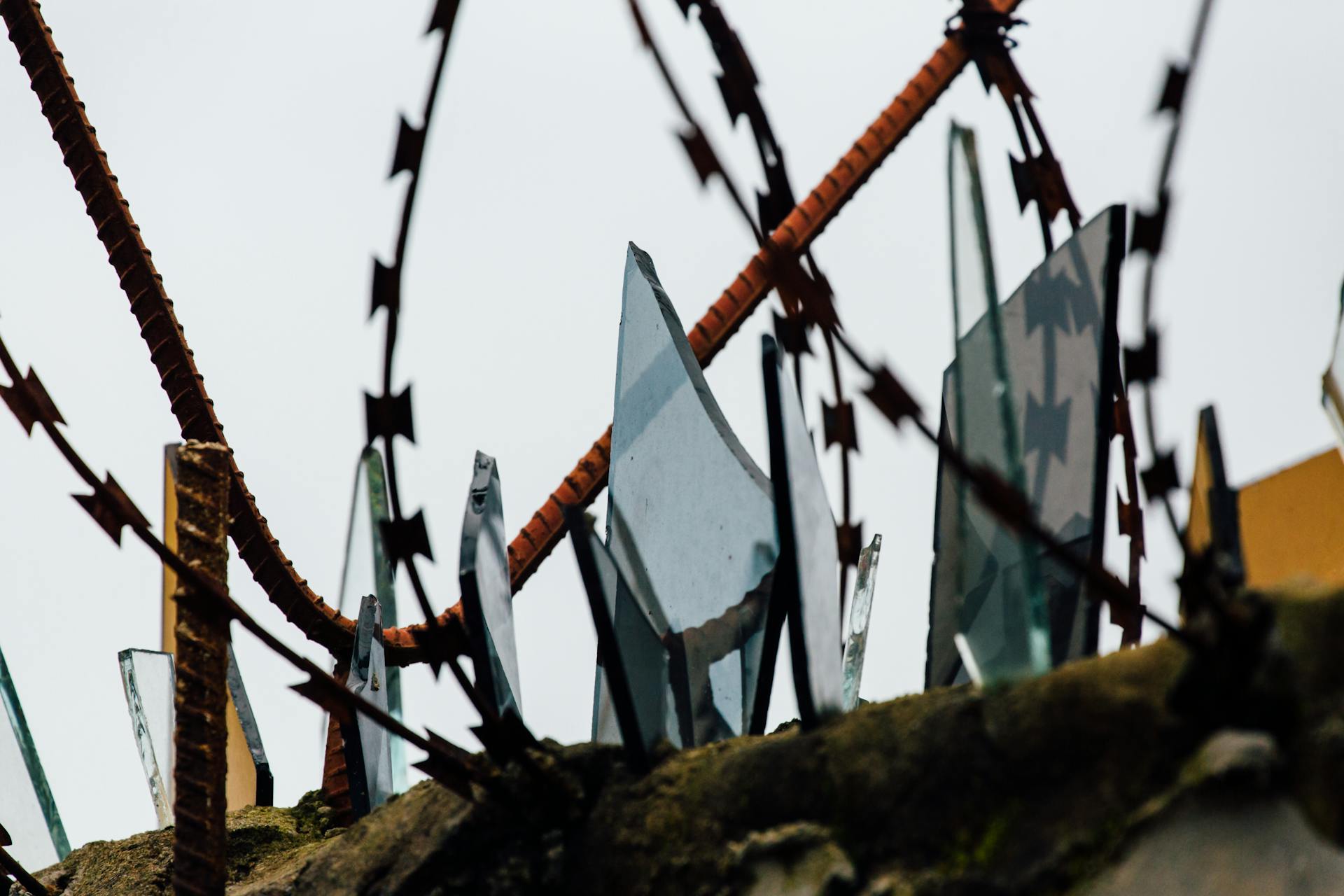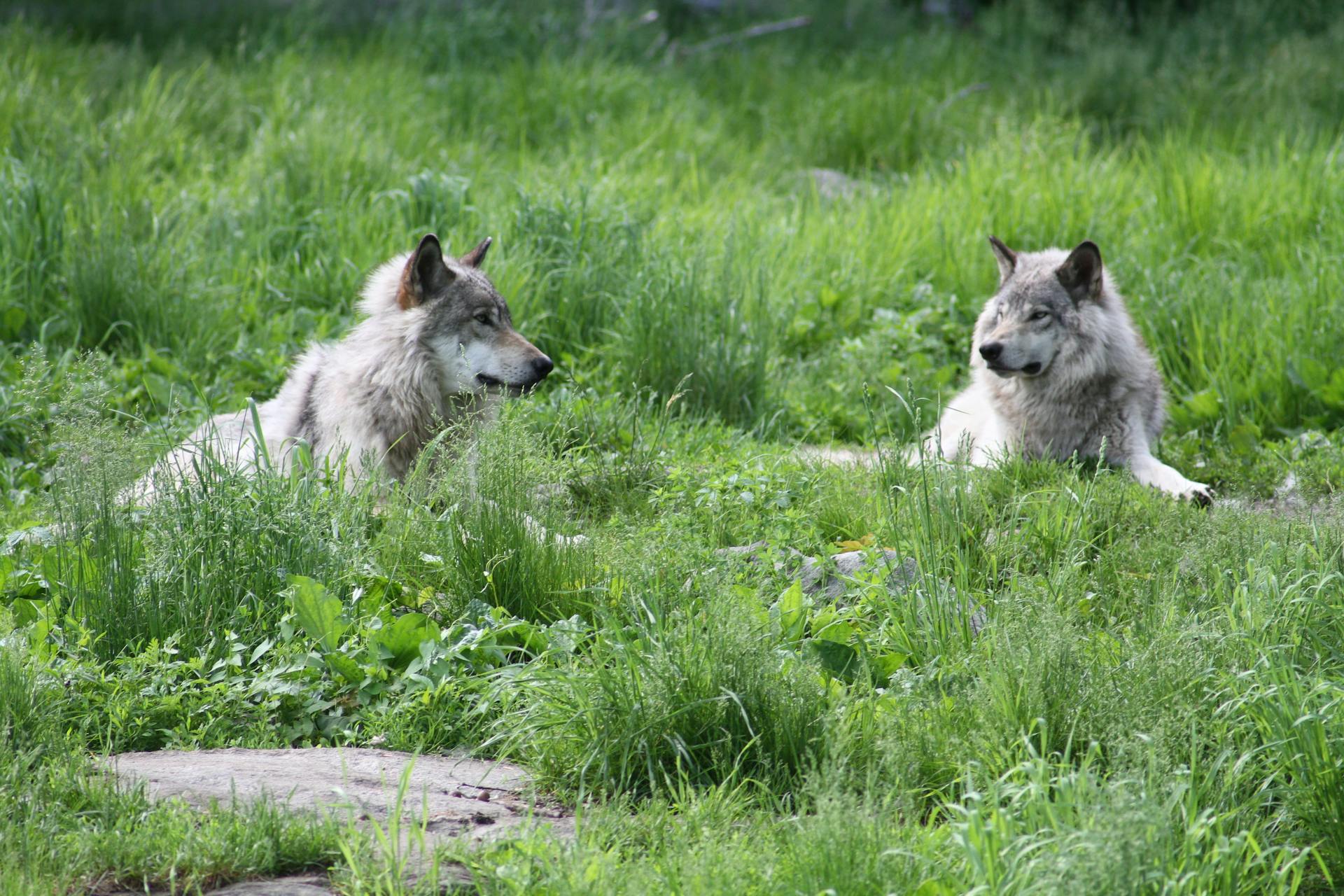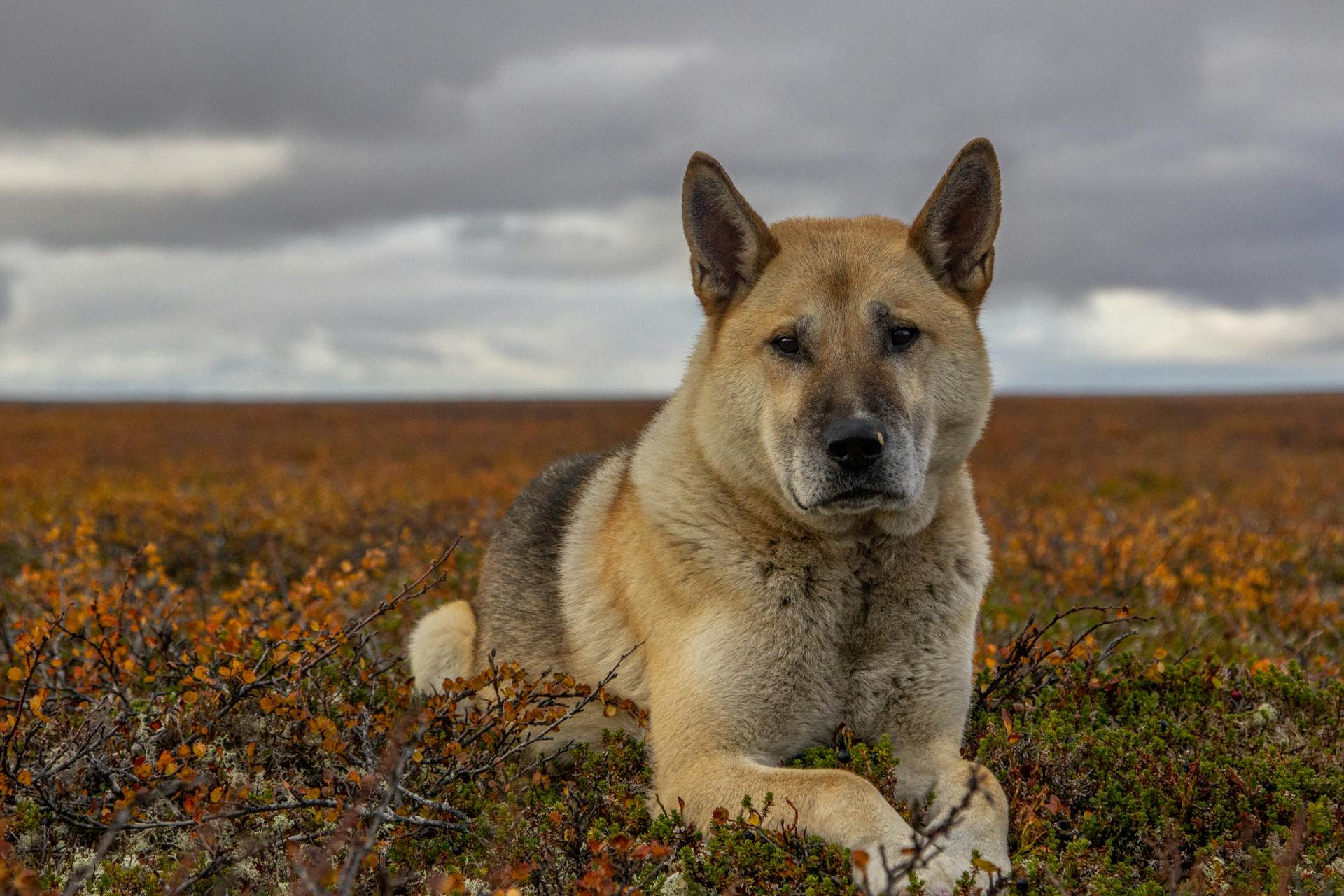
Resource guarding in dogs is a serious issue that can have severe consequences. According to studies, up to 80% of dogs exhibit resource guarding behavior, making it a common problem.
Resource guarding can lead to aggressive behavior, biting, and even attacks on people. In extreme cases, it can result in fatalities.
Dogs may guard resources such as food, toys, or even attention from their owners. This behavior is often rooted in fear, anxiety, or past trauma.
If you suspect your dog is resource guarding, it's essential to address the issue promptly and seek professional help from a certified dog trainer or behaviorist.
What is Resource Guarding?
Resource guarding in dogs is a behavior where they become possessive and aggressive when their resources, such as food, toys, or even a preferred human, are threatened or taken away.
Dogs may exhibit resource guarding in various situations, including mealtime, playtime, or even in their nesting spot.
Bestselling author and animal behaviorist Patricia McConnell, Ph.D., refers to this behavior as "possessive aggression", emphasizing that from a dog's perspective, possession is nine-tenths of the law.
Some dogs may not mind being petted or interrupted while eating or playing, but others will become very defensive and aggressive in these situations.
Resource guarding can extend beyond food and toys, as dogs may also guard their companionship with a preferred human.
Recognizing the Behavior
Resource guarding can be a subtle behavior, but there are some clear signs to watch out for. Growling, ears pointed backward, lip-licking, and a sudden stiffness in the body are all potential indicators that your dog is anxious or protective of a resource.
A dog that is hyper-fixated on an object, another dog, or even a human family member may be exhibiting resource guarding behavior. If your dog stares fixedly at another dog during dinnertime and doesn't look away, they might be worried that they're going to make a move for their meal.
Some common body language signs of resource guarding include stiffening the body over an item, a hard stare, "whale eye" (when dogs show the whites of their eyes), lifting their lips, low growling, and baring their teeth. These signs can be a warning that your dog is feeling threatened and may escalate to more aggressive behavior if not addressed.
Here are some signs to watch out for:
- Growling
- Ears pointed backward
- Lip-licking
- A sudden and obvious stiffness in the body
- Hyper-fixation on an object, dog or human
- Increased attentiveness to other dogs
How to Recognize
Recognizing the behavior of resource guarding in dogs can be challenging, but there are some key signs to look out for. Dogs may growl, show stiff body language, or even bare their teeth when they feel threatened.
One of the most common signs of resource guarding is a hard stare, which can be accompanied by a stiffened body. This is often referred to as "whale eye" when dogs show the whites of their eyes. If you notice your dog exhibiting these behaviors, it's essential to intervene.
Consider reading: Dogs Back Legs Crossed When Walking
Dogs who are prone to resource guarding may also exhibit increased attentiveness to other dogs, particularly during mealtimes. If one dog stares fixedly at another during dinner and doesn't look away, it may be a sign that they're worried about losing their food.
Here are some common signs of resource guarding:
- Growling
- Ears pointed backward
- Lip-licking
- A sudden and obvious stiffness in the body
- Hyper-fixation on an object, dog or human
- Increased attentiveness to other dogs
It's essential to remember that resource guarding can develop at any age, and it's not limited to specific breeds. Any dog can be prone to resource guarding, and it's crucial to learn how to recognize the signs to prevent more aggressive behavior from escalating.
Puppies
Puppies can exhibit possession issues, which can be prevented with the right techniques. Resource guarding prevention is crucial for puppies to avoid developing unwanted behaviors.
Some puppies may have possession issues, but with the right exercises, they can learn to share and drop items easily. A helpful exercise for possession prevention involves taking a toy away from your puppy and then rewarding them for calm behavior.
For your interest: How to Stop Resource Guarding in Puppies
Puppies who are not socialized properly may develop resource guarding issues. Reading a blog post on possession prevention for puppies can provide valuable insights and tips for preventing these issues from occurring.
Resource guarding prevention for puppies involves teaching them to drop items on command and to share with others. This can be achieved through positive reinforcement training and consistent practice.
Understanding Why It Happens
Resource guarding is a normal, natural survival behavior that appears more in some dogs than others. It's not about dominance, but about feeling threatened and wanting to protect valued items.
Dogs may resource guard due to feeling insecure and unable to cope, which can be a result of poor genetics, harsh training methods, or lack of early socialization. This can lead to more subtle warnings, such as stiffening up or staring intently, which are often ignored or punished.
Some dogs are more prone to resource guarding, including field-line gun dogs like spaniels and retrievers. Limited resources in the past, such as coming from a puppy mill or hoarding situation, can also contribute to this behavior.
Here are some common triggers for resource guarding:
- We tend to see this behavior more frequently in field-line gun dogs, such as spaniels and retrievers.
- Poor genetics/breeding and/or lack of early socialization.
- A history of harsh training methods, especially when started at an early age.
- Well-meaning owners have repeatedly taken items away or put their hand in the dog's bowl from an early age.
- The dog has had limited resources in the past.
It's essential to understand that resource guarding is not about competing with us in a hierarchical relationship, but about feeling threatened and wanting to protect valued items.
Prevention and Intervention
Consistently providing ample resources is a good first step in preventing resource guarding in dogs. This means having enough toys, beds, treats, and food to go around, so your dog doesn't feel the need to protect their belongings.
You can use positive reinforcement to encourage good behavior, such as dropping treats into your pup's bowl while they're eating. This helps them associate your presence with something good happening.
Teach your dog "give" and "leave it" cues by pairing the action with a reward, and always offer a trade if you need to take something away. This can help prevent resource guarding from developing in the first place.
If you do encounter resource guarding, try removing problem items, sequestering dogs in different rooms during mealtimes, and consistently rewarding good behavior. Never punish your dog for "bad" behavior, as this can exacerbate the issue.
Worth a look: Dog Bites Fingers When Taking Treats
Here are some key interventions to try:
- Remove problem items, such as a specific toy that triggers possessiveness.
- Sequester dogs in different rooms during mealtimes to prevent food aggression.
- Consistently reward good behavior and never punish dogs for "bad" behavior.
- Work to build your dog's confidence by exposing them to new situations, people, and animals.
Stopping Dog Theft
Stopping dog theft requires patience and consistency. Start training your dog early to prevent resource guarding from developing, as it's much easier than trying to fix the behavior later.
You can still work with dogs who already resource guard, but it's essential to go slowly and avoid rushing the process. Tether your dog to a heavy and durable object, then toss food in their general direction while staying 6 to 8 feet away.
Walk by your dog while throwing food, but keep moving to avoid startling them. If your dog gives warning signals like stiffening their body or raising their lip, you've wandered too close.
As you repeat this process, watch for changes in your dog's body language. If they look up at you in a happy way, anticipating food, you can slowly move a little closer. However, don't rush this process, as it's crucial to avoid stressing your dog out.
If you're struggling with resource guarding, consider asking a professional trainer for help. They can provide valuable tips and tricks to guide you along the way.
Take a look at this: Dogs Spitting Out Food
What Can I Do?
If you're dealing with a resource guarding dog, the good news is that you can work with them to overcome this behavior. Start training early, but if you're adopting an adult dog, don't worry, you can still help them adjust.
To prevent resource guarding from developing in the first place, training is essential. Costanza advises tethering your dog to a heavy and durable object and tossing food in their direction while staying 6-8 feet away.
You can also try desensitizing your dog to your presence around high-value items, like food. This process should be done slowly and carefully, with the end goal of being able to approach their bowl without them feeling threatened or stressed.
If you're working with an adult dog, it's best to seek the help of a professional trainer, as they can provide personalized guidance and tips.
Curious to learn more? Check out: What Food Makes Dogs Sleepy
Resources
If you're looking for guidance on how to prevent and intervene in resource guarding behavior in dogs, here are some valuable resources to check out.
Mine! A Guide to Resource Guarding in Dogs by Jean Donaldson is a great book to get started with.
To help your dog learn to share, you can try dropping tasty treats into their bowl while they're eating, as suggested by experts.
Your Dog's Friend webinar, "Resource Guarding – how to help the dog who doesn't share", is another excellent resource to explore.
In addition, Teaching your Dog to Drop, a video by Chirag Patel, and Resource Guarding in Dogs, a video by Michael Shikashio, are both worth watching.
If you're looking for more in-depth information, check out Resource Guarding Treatment and Prevention by Dr. Patricia McConnell in her blog, "The Other End of the Leash."
You can also find helpful information on Unwanted Dog Food Guarding Behavior from the "Whole Dog Journal."
Lastly, Resource Guarding/ Food Aggression, a video that shows a professional trainer demonstrating the general methodology, and some of the more subtle signs of resource guarding, is a great resource to learn from.
Discover more: Food Caching Dogs
Managing Existing Behavior
If your dog is already a serious resource guarder, it's essential to seek professional help to ensure everyone's safety. Consult a positive trainer or veterinary behaviorist, such as those listed by Costanza, who can provide guidance on managing the behavior.
You should take your dog to the vet before starting any training, as a change in behavior or aggressive behavior may indicate an underlying medical issue. Costanza recommends this step to rule out any potential health problems.
Avoid engaging in punishment or negative reinforcement, as this can worsen the behavior. Costanza emphasizes that yelling, screaming, or hitting your dog will only make things worse.
If your dog has bitten someone, especially a child, it's crucial to seek help immediately. Costanza suggests calling a behaviorist to determine the best course of action and ensure everyone's safety.
Resource guarding can become a serious issue if left unchecked, and it's essential to take proactive steps to manage the behavior. By working with a professional, you can develop a plan to address the issue and keep your dog and family safe.
When to Seek Help
If you've tried all the steps above—providing ample resources, removing toys that cause tension, working on positive reinforcement training—and the behavior hasn't changed, it could be time to seek professional help.
Your veterinarian can recommend a trainer or behaviorist who will work with you more rigorously. Be sure to choose a professional who uses positive reinforcement only.
If you're not sure you've reached that point, try this simple metric: If you're worried your dog might bite someone, that's a good sign you need to call in the experts.
Frequently Asked Questions
Should a dog be put down for resource guarding?
Resource guarding in dogs may not always require euthanasia, but environmental changes may not be enough for dogs showing human-directed aggression. Euthanasia is a possible option for dogs with severe aggression issues.
What if my dog bites during resource guarding?
Seek professional help from a Certified Applied Animal Behaviorist or Certified Professional Dog Trainer if your dog bites during resource guarding. Ensure all dogs in the household receive enough food to reduce resource guarding motivation.
Should you ignore resource guarding?
No, resource guarding should never be ignored as it can become very dangerous if left unchecked. Addressing it promptly is crucial to prevent escalation and ensure a safe environment for all.
Sources
- https://www.humanesociety.org/resources/resource-guarding-dogs
- https://www.akc.org/expert-advice/training/resource-guarding-in-dogs/
- https://peachonaleash.com/resource-guarding-why-it-happens-and-how-to-stop/
- https://demarinisdogtraining.com/resource-guarding-in-dogs/
- https://yourdogsfriend.org/help/resource-guarding-growling/
Featured Images: pexels.com


